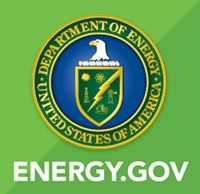New Appraisal Institute Book Aids Valuation of ‘Green’ Homes
CHICAGO – April 8, 2014 – (RealEstateRama) — Appraisers need to get up to speed on the latest energy efficient home features and should learn to determine how green a property is, according to a new book by the nation’s largest professional association of real estate appraisers.
“Residential Green Valuation Tools,” published this week by the Appraisal Institute, provides a comprehensive overview of the valuation of high-performance homes, a growing market. The book describes the main elements of green homes – site, water and energy efficiency, indoor air quality, materials, and operations and maintenance – and presents case studies to illustrate common scenarios and problems that arise in valuing high-performance homes.
“The market for green, or high-performance, homes is clearly growing, and appraisers who want to appraise these homes competently need to stay up-to-date on the latest green terms, home features and organizations,” Appraisal Institute President Ken P. Wilson, MAI, SRA, wrote in the book’s foreword.
“Residential Green Valuation Tools” by Sandra K. Adomatis, SRA, provides detailed instructions on properly completing the Appraisal Institute’s Residential Green and Energy Efficient Addendum form for appraisal reports. The valuation of Energy Star homes, passive solar houses, solar photovoltaic systems and net-zero energy homes is also explored.
“Residential Green Valuation Tools” (ISBN: 978-1-935328-52-0) is a 191-page soft cover book. It is available for $60 ($50 for Appraisal Institute professionals). Call 888-756-4624 or order online.
Publishing “Residential Green Valuation Tools” is the most recent example of the Appraisal Institute’s leadership in green valuation:
- Since June 2008, the Appraisal Institute has offered more than 400 individual programs on green and energy efficient valuation, and nearly 5,600 attendees have participated.
- At the request of appraisers’ clients, in April 2014 the Appraisal Institute expanded its Valuation of Sustainable Buildings Professional Development Program’s online registries of residential andcommercial appraisers to include everyone who has completed the course.
- The Appraisal Institute and the Institute for Market Transformation issued guidance in January 2014 on valuing green and energy efficient buildings.
- In October 2013, the Appraisal Institute partnered with the Colorado Energy Office to provide ananalysis of the impact of solar PV systems on the home-buying process. The study sought to better understand the impact, if any, that solar PV has on the sales transaction process.
- In March 2013, the Appraisal Institute released an update to the Residential Green and Energy Efficient Addendum, the first form of its kind intended for appraisers’ use. It is an optional addendum to Fannie Mae Form 1004, the appraisal profession’s most widely used form for mortgage lending purposes. The Appraisal Institute’s addendum allows appraisers to identify and describe a home’s green features, from solar panels to energy-saving appliances.
- In February 2013, the Appraisal Institute added a new solar course to its Valuation of Sustainable Buildings Professional Development Program, which educates appraisers on the intricacies of valuing high-performance residential and commercial buildings, and consists of four courses: “Introduction to Green Buildings: Principles & Concepts;” “Case Studies in Appraising Residential Green Buildings;” “Case Studies in Appraising Commercial Green Buildings;” and “Residential and Commercial Value of Solar.”
- In January 2012, the Appraisal Institute announced its support for PV Value, a spreadsheet developed by Solar Power Electric and Sandia National Laboratories that assists appraisers and others seeking to establish the value of a property’s solar-powered features.
- The Appraisal Institute in October 2011 sponsored a report that outlined ways to finance $150 billion per year in energy efficiency projects that yield double-digit financial returns. “Energy Efficiency Financing: Models and Strategies” by Capital-E and partner organizations found that within 10 years, investment at this level would save U.S. businesses and households $200 billion annually and would create more than 1 million new full-time jobs.
- In October 2011, the Appraisal Institute endorsed the federal Sensible Accounting to Value Energy (SAVE) Act, which would improve the mortgage underwriting process by ensuring energy costs are included. Sponsored by Sens. Michael Bennet, D-Colo., and Johnny Isakson, R-Ga., the SAVE Act would instruct federal loan agencies to assess a borrower’s expected energy costs when financing a house. IMT also is among the bill’s supporters.
- The Appraisal Institute contributed to the Green MLS Tool Kit, issued in April 2010. The tool kit was created to help Realtors add a green initiative to their local multiple listing service. The tool kit provides guidance on enhancing data in the MLS, empowering appraisers to make well-supported comparisons, analyses and adjustments.
# # #
Stay connected with the latest news from the Appraisal Institute by following us on Facebook, Twitter,LinkedIn, YouTube and our blog, Opinions of Value.
The Appraisal Institute is a global professional association of real estate appraisers, with nearly 22,000 professionals in almost 60 countries throughout the world. Its mission is to advance professionalism and ethics, global standards, methodologies, and practices through the professional development of property economics worldwide. Organized in 1932, the Appraisal Institute advocates equal opportunity and nondiscrimination in the appraisal profession and conducts its activities in accordance with applicable federal, state and local laws. Individuals of the Appraisal Institute benefit from an array of professional education and advocacy programs, and may hold the prestigious MAI, SRPA, SRA, AI-GRS and AI-RRS designations. Learn more at www.appraisalinstitute.org.















